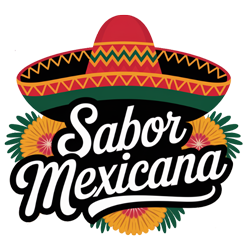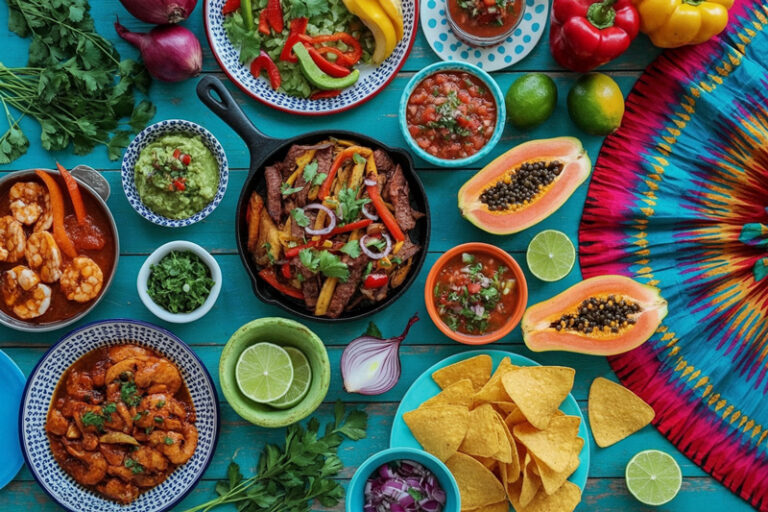Walk any coastal town in Quintana Roo at breakfast and you’ll hear the day come alive before you see it: tortilla presses thump, knives whisper through herbs, and vendors call out the morning’s caldo or cochinita. Markets here aren’t just where food is bought; they’re where the Mexican-Caribbean’s many identities—Maya, Caribbean, mestizo, and global—meet over a hot comal. This guide maps the region’s market culture and how travelers can taste it thoughtfully, from Cancún’s downtown maze to Chetumal’s heritage halls, island loncherías, and Maya Ka’an’s community kitchens.
Cancún: beyond the hotel zone
Cancún’s Mercado 23 is the classic first stop if you want local before luxury. Opened in the late 1970s (its official name is Mercado Javier Rojo Gómez), it remains the city’s oldest, everyday market: produce piled high beside chiles and herbs, stalls ladling guisos and tortas, flower vendors and spice shops in the same aisles where hotel cooks stock up before service. It’s a working market, not a souvenir bazaar—and that’s precisely the appeal.
As afternoon leans into evening, Parque de las Palapas—a few blocks away—turns into a street-food fairground: marquesitas rolled to order, fresh-fried churros, esquites, and family stands serving antojitos you can eat on a bench under the palms. Visitors consistently point here for inexpensive, classic Mexican snacks, making it a perfect foil to the hotel zone’s polished dining rooms
Island rhythms: Isla Mujeres & Cozumel
Across the water, Isla Mujeres keeps market life compact and neighborly. The downtown Adolfo López Mateos Municipal Market anchors simple breakfast counters (think: a glass of bright-green chaya juice next to a plate of salbutes) and quick stops for fresh fruit before a beach day. Travelers use it the way locals do—early, casual, and cash in hand.
On Cozumel, the Mercado Municipal sits a short walk from the main plaza. Inside, loncherías deliver the island’s greatest hits: cochinita and lechón tacos, fried fish, stews, licuados, and the reliable chaos of a busy lunch hour. It’s the place to feel the island’s everyday pulse before you drift off to reefs and beach clubs.
Southbound: Chetumal, Bacalar & Costa Maya
Follow the coast toward Chetumal, capital of Quintana Roo, and markets get roomier, slower, more Caribbean. The Mercado Ignacio Manuel Altamirano—known to many as the Mercado Viejo—serves as a window into the border city’s foodways: Belizean-tilted rice and beans alongside Mexican classics, griddled empanadas, fish tacos, and the ever-popular marquesitas. Even a brief wander delivers the smells and sounds that define daily life here.
An hour northwest, lagoon-side Bacalar is quieter but still centers on its Mercado Municipal in the mornings—fruit and veg, tortillas warm from the press, juice bars, and, on weekends, vats of slow-cooked cochinita. It’s a small stop, but if you’re staying near the lagoon, it becomes part of the ritual: shop, sip, swim.
Down the coast, Mahahual (the village behind the Costa Maya cruise pier) lines its malecón with open-air stands and seafood spots; step off the cruise complex and taxi a few minutes to the village to find the casual market-meets-street-scene locals use.
Into Maya Ka’an: foodways with roots
The most meaningful tastes in the Mexican-Caribbean often happen inland, where Maya communities keep culinary traditions vivid. The Maya Ka’an region—stretching around the Sian Ka’an Biosphere Reserve—promotes community-based tourism that puts cooking and agriculture at the center: grinding pumpkin seeds for sikil p’ak, grilling citrus-marinated poc chuc, steaming tamales colados in banana leaves, or tasting stingless-bee honey after a forest walk. These are small, hosted experiences that teach as you eat and direct tourism income to rural families.
From tacos to tasting menus
Markets handle breakfast and lunch; evenings can go high-concept. In 2024–2025, the Michelin Guide began rating restaurants in Quintana Roo, a symbolic shift that recognizes the region’s culinary range beyond resort buffets. Standouts include Cocina de Autor Riviera Maya in Playa del Carmen and Le Chique in Puerto Morelos (among the first regional recipients of stars), while curated lists also spotlight contemporary rooms from Cancún to Tulum. Use the Guide as a compass after you’ve tasted the region’s fundamentals in markets and loncherías.
What markets reveal about place
One reason market visits are so compelling here is how clearly they show the coast’s cultural blend. Yucatecan standards—cochinita pibil, panuchos, salbutes—share tables with Caribbean flavors (coconut-tinged rice and beans, whole fried fish, spicy pickles) and Mexico-wide antojitos. In Cancún and Playa del Carmen, you’ll notice vendors stocking the hotel industry alongside families shopping for home kitchens. On the islands, stalls turn over quickly with the snorkel crowd at lunch; in Chetumal and Bacalar, mornings can feel like an unhurried roll call of regulars. Markets are the best lens for this diversity precisely because they’re built for locals first.
How to taste respectfully
A few ground rules make market eating smoother and more rewarding:
- Go early. Produce is perkiest and hot foods freshest from 7–10 a.m.; by noon, vendors wind down (especially inland).
- Bring small bills and pesos. Many stands are cash-only.
- Look for short menus. The stall specializing in guisados or mariscos often outshines the one cooking everything.
- Mind the water. Prefer purified water and ice; choose fruit waters (aguas frescas) made with filtered water; peel fruits if you have a sensitive stomach.
- Ask before photographing. A smile and ¿Puedo tomar una foto? goes a long way.
- Choose reusables. Carry a tote and collapsible container; markets will happily fill what you bring.
If you want a primer before diving in, join a guided taco or market walk in Cancún or Playa—great for context on masa, salsas, and local seafood. Then circle back solo once you know what to order.
The working coast: cooperatives, seasons, and sustainability
Food tourism here relies on people who fish, farm, grind, press, and fry for a living—often with thin margins. In coastal towns like Puerto Morelos, fishers’ cooperatives still sell the catch of the day on the square; buying there supports small-scale livelihoods and gets you seafood hours from the sea. Ask vendors or your host how to find the cooperativa de pescadores and what species are in season.
The coast also faces environmental pressures that directly touch what’s on your plate. One is the now-familiar summer arrival of sargassum, the floating seaweed that in record years carpets beaches and complicates fishing and tourism. University of South Florida’s Sargassum Watch bulletins flagged 2025 as an exceptionally high-abundance season in the tropical Atlantic and Caribbean, with pulses reaching the Yucatán through the channel—conditions that vary beach by beach but shape the visitor experience and the working day for fishers and beach vendors.
At the same time, researchers and local innovators are exploring ways to turn the problem into opportunity—converting sargassum into biogas, building materials, or packaging to reduce disposal impacts and create new revenue streams for coastal communities. It’s a reminder that the food economy here extends far beyond the plate to questions of coastal management and circular design.
Another concern is microplastic pollution in nearshore fisheries. A 2024 study of small-scale target species in the Mexican Caribbean found microplastics present in a significant proportion of fish—especially those caught in shallow waters—raising both ecological and social questions for communities that rely on them. Reporting from Puerto Morelos adds human texture to those findings, following cooperative fishers who balance sustainability, tight finances, and the demands of a luxury tourism market. As a guest, favor seasonal, responsibly sourced species and ask restaurants where their fish is from; curiosity can nudge supply chains.
A sample tasting itinerary
Day 1 – Cancún: Breakfast circuit of Mercado 23 (tamales, jugos, tortillas to go). Sunset snacking at Parque de las Palapas (marquesitas, churros). Dinner in the hotel zone or downtown taquerías.
Day 2 – Isla Mujeres: Early ferry, breakfast at the municipal market, beach time, and a late seafood lunch.
Day 3 – Cozumel: Market lunch among the loncherías, then a slow walk through residential streets for paletas.
Day 4 – Bacalar/Chetumal: Shop the Bacalar market for a picnic on the lagoon; next morning, Chetumal’s Mercado Viejo for Belize-leaning flavors before you fly out.
Any evening: Trade up to a tasting menu to see how chefs reinterpret regional products—proof that market flavors and fine dining are two sides of the same coin.
The takeaway
To “eat the Mexican-Caribbean” is to follow the people who make it run: women flipping tortillas in a Tulum market, a kid twirling marquesitas batter in Cancún, a co-op fisher in Puerto Morelos filleting the morning’s catch, a Maya family in Muyil handing you a bowl of sikil p’ak they’ve ground themselves. Visit markets early, ask questions, carry pesos, and choose stalls and tours that keep value close to the people doing the work. The result is better food, richer stories—and a coastline that has more reason to protect its waters, forests, and recipes for whoever comes next.

